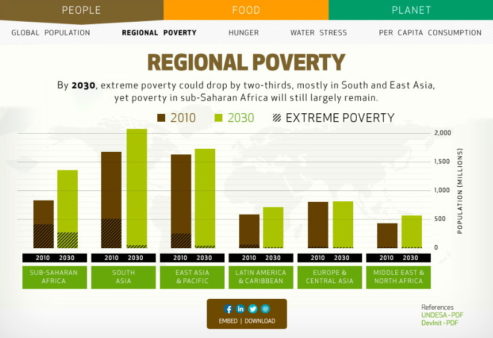Tag: 2030

Farming First Launches Infographic: Food and Farming in 2030
Global: This week in New York the first Open Working Groups will begin to discuss the Sustainable Development Goals (SDGs) that will replace the Millennium Development Goals (MDGs) when they expire in 2015. In an effort to inform the SDGs, Farming First has launched a creative infographic that skips forward in time to 2030, when the […]
Read More
